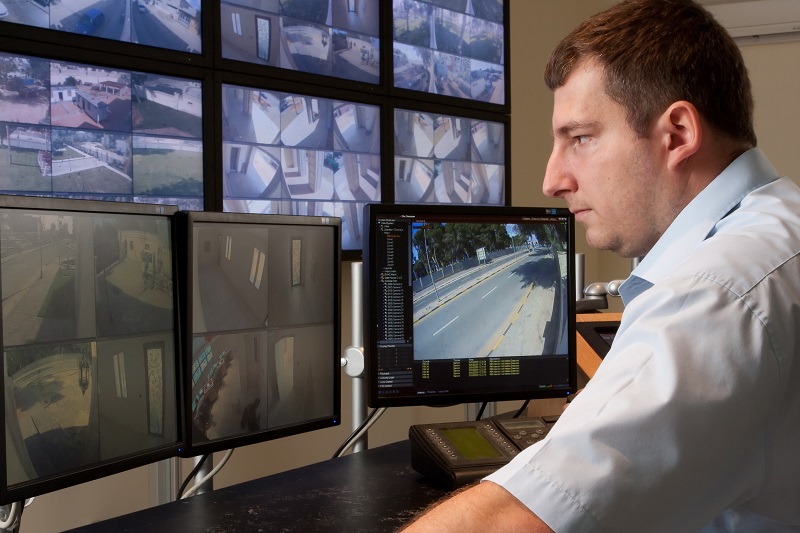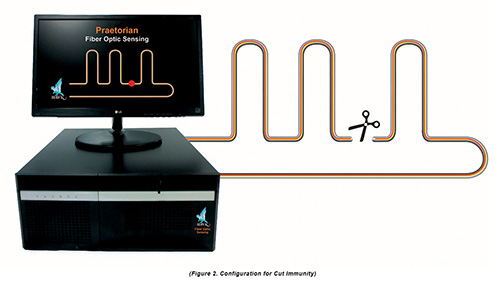Investing in a Fiber Optic Security System: How It’s the Future of Secure Networks
Why Fiber Optic Safety And Security Equipments Are the Future of Security
The shift to fiber optic safety and security systems notes a substantial improvement in the realm of protection, driven by their remarkable information transmission abilities and strength to outside disturbances. These systems not just promote faster and extra trusted communication yet likewise present an economical service with lowered maintenance requirements. As the landscape of security progresses along with emerging innovations such as AI and IoT, the possibility for fiber optics to improve and redefine protection infrastructures ends up being significantly evident. The effects of these innovations increase important questions about the future of safety measures and their performance in an ever-changing environment.
Advantages of Fiber Optic Systems
One of the primary advantages of fiber optic systems is their superior bandwidth capacity, which promotes the transmission of huge quantities of data over long distances without substantial loss. This characteristic is especially useful for safety and security applications that call for the constant tracking and transfer of high-def video feeds, sensing unit information, and various other crucial details. Optical fiber can accommodate the growing needs of modern safety and security systems, making certain that information continues to be intact and reliable.
Additionally, fiber optic wires are less at risk to electro-magnetic interference, which can be a substantial issue in environments with numerous electronic tools. This resistance improves the integrity of the information being sent, consequently reducing the risk of data violations or system failures. In addition, fiber optic systems are inherently a lot more protected than traditional copper cords, as using a fiber optic line without detection is extremely challenging.
The resilience of fiber optic cable televisions also adds to their appeal. They are immune to environmental aspects such as dampness and temperature variations, lowering maintenance prices and increasing system durability. On the whole, these advantages setting fiber optic systems as a durable and efficient option for modern-day safety and security facilities, making certain reputable and secure information transmission.
Boosted Information Transmission Rate

The capability to send vast quantities of information quickly helps with the smooth assimilation of high-def video clip feeds and progressed analytics. Safety systems can currently refine and evaluate details in real-time, enhancing reaction times and situational recognition. In addition, fiber optic links support longer transmission distances without degradation of signal high quality, making them ideal for expansive safety networks.
The boosted rate of fiber optic systems not just improves the efficiency of safety and security operations however likewise decreases latency. This is especially crucial in important situations where prompt decision-making can prevent protection breaches or alleviate prospective threats. As companies proceed to prioritize safety and security and effectiveness, the demand for quick and reliable information transmission will unquestionably solidify fiber optic systems as a cornerstone of modern-day security facilities.
Resistance to Disturbance
Fiber optic safety systems consistently show extraordinary resistance to electro-magnetic disturbance, visit their website an essential benefit in atmospheres prone to digital noise. Unlike typical copper wires, which can be adversely affected by electro-magnetic fields, superhigh frequency disturbance, and other kinds of electric disturbance, fiber optic cords utilize light to send data. This integral property ensures that the signals stay clear and unaltered, no matter surrounding digital activity.
Using glass or plastic fibers in fiber optic innovation develops a barrier versus interference, permitting for reputable information transmission even in tough scenarios such as commercial facilities, metropolitan locations with high electronic website traffic, or locations near radio towers. This particular considerably lowers the possibility of signal destruction or loss, making fiber optic systems specifically appropriate for protection applications where integrity and precision of information are critical.
Additionally, this resistance to disturbance boosts the overall performance and integrity of security systems, guaranteeing that surveillance and sharp systems operate effortlessly. In a world where protection is increasingly endangered by sophisticated modern technologies, the durability of fiber optic systems stands out as a pivotal feature, enhancing their status as an important component of contemporary protection framework.
Cost-Effectiveness Gradually
Significant price savings can be accomplished in time with the implementation of fiber optic safety systems. While the initial investment may seem higher contrasted go to my site to traditional copper-based systems, the long-term monetary benefits emerge with decreased operational and upkeep costs (fiber security). Fiber optic cables are inherently more durable and much less at risk to ecological factors, which translates to lower substitute and fixing expenditures over their life expectancy
Moreover, fiber optic systems need less power to run, which further reduces energy prices. Boosted data transmission abilities enable less repeaters and amplifiers, decreasing equipment financial investment and enhancing installation processes. The scalability of these systems additionally contributes to cost-effectiveness, as companies can expand their safety framework without incurring considerable additional costs.
An additional factor to think about is the enhanced performance in monitoring and reaction capacities that fiber optics offer. Boosted real-time information transmission can result in quicker event action times, potentially mitigating losses and liabilities related to security breaches. In sum, the long-term benefits of fiber optic security systems not just validate the preliminary expense yet also position them as an economically sensible option for organizations seeking durable protection options.

Future Developments in Protection
Progressing technologies are established pop over to this site to change safety systems, incorporating expert system (AI) and device discovering to enhance threat detection and feedback abilities. These developments will allow protection systems to examine huge amounts of information in real-time, recognizing patterns and anomalies that indicate possible risks. This aggressive technique will certainly allow quicker decision-making and more efficient occurrence responses.
Additionally, the consolidation of the Internet of Things (IoT) is leading the way for interconnected security gadgets, offering comprehensive surveillance and tracking. Smart sensors can relay details concerning environmental adjustments, while automated signals can inform security workers immediately of suspicious tasks.
Furthermore, the development of biometric modern technologies will better reinforce protection systems. Face acknowledgment, finger print scanning, and retina recognition are ending up being extra advanced, offering layers of verification that are challenging to bypass.
Verdict
In conclusion, fiber optic safety and security systems stand for a significant development in security technology, using unmatched data transmission rate, resistance to electro-magnetic interference, and long-term cost-effectiveness. As the need for innovative security options remains to grow, the integration of fiber optics with arising technologies such as AI, IoT, and biometrics will certainly further improve safety and security infrastructures (fiber security). The mix of these technologies will guarantee a much more secure and responsive atmosphere, solidifying optical fiber as a keystone of future safety systems